Additional notes (click to expand)
Medicinal
Dioscorides (Materia Medica, c. 70 AD) has more information on its sedative and analgesic properties: ‘Ye juice being drunk ... doth expel upward phlegm and black choler ... but being too much drank it drives out life.’ and ‘that there be given of it ... to such as shall be cut, or cauterised ... for they do not apprehend the pain, because they are overborn with dead sleep.’ It is interesting to see that the use of hyoscine/scopolamine has continued for two millennia for the same purpose.
Gunther, R.T.. (1938). The Greek Herbal of Dioscorides ... Englished by John Goodyear.
Culpeper: under ‘Herbs’ he writes: ‘Mandragora. Mandrakes. Fit for no vulgar use, but only to be used in cooling ointments.’ Under ‘Roots’: ‘Mandagorae. Of mandrakes. A root dangerous for its coldness ... the root is scarcy [=scarce], and dangerous for the vulgar to use; therefore I leave it to those that have skill.
Culpeper, N. (1652). The English Physitian. London.
This is a member of the family Solanaceae, and like Atropa belladonna and Hyoscyamus niger contains the atropinic alkaloid, hyoscine/scopolamine. This is still used as a premedication prior to surgery as it causes sedation, a degree of amnesia, and is anti-emetic. It also produces a dry mouth and a slow pulse (unlike atropine), but in larger doses hallucinations, coma and death. In the elderly especially it may cause excitement and confusion. Dioscorides (Materia Medica, c. 100 AD) has more information on its sedative and analgesic properties: ‘Ye juice being drunk ... doth expel upward phlegm and black choler ... but being too much drank it drives out life.’ and ‘that there be given of it ... to such as shall be cut, or cauterised ... for they do not apprehend the pain, because they are overborn with dead sleep.’ It is interesting to see that the use of hyoscine/scopolamine has continued for two millennia for the same purpose.
Oakeley, Dr. H. F. . (2013). The Gardens of the Pharmacopoeia Londinensis.
link
Acetylcholine antagonists. Contain atropine and scopolamine, used to dilate the pupil; speed up the heart; dry up saliva and gastric secretions, and to treat organophosphorous and mushroom poisoning & motion sickness.
Oakeley, Dr. H.F. (2013). Medicines from RCP plants label list 5-2013.docx.
POM atropine, scopolamine
Nomenclature
Syn.= Mandragora vernalis
Officina is a noun for a workshop, store room, apothecaries shop. Officinarum - genitive plural - means 'of the apothecaries shops/work rooms, store houses'. So Mandrake while found in apothecaries shops was not a medicinal substance to buy across the counter. Saccharum officinarum, sugar cane would be purchased from and used in apothecaries shops, but was not a medicinal substance. There are others - Pilosella officinarum, Ceterach officinarum, Lesser Galangal ie Alpinia officinarum, Euphorbia officinarum, but very few compared to 'offiicinale' and 'officinalis'
Other use
Poison: In a battle over Carthage (200BC) Hannibal used mandrake- laced wine to drug African warriors then returned to ambush and kill them as they slept.
Stewart A.(2009) Wicked Plants. Algonquin Books of Chapel Hill. 106
The Romans believed mandrake could cure demonic possession: ancient Greeks used it in love potions as the root resembled a male sexual organ.
Stewart A.(2009) Wicked Plants. Algonquin Books of Chapel Hill. 106
Poison:In Shakespeare's Romeo and Juliet the friar gives Juliet a mandrake sleeping potion to feign death
Stewart A.(2009) Wicked Plants. Algonquin Books of Chapel Hill. 106
Ancient civilisations thought the bifurcated, hairy root resembled a person
Stewart A.(2009) Wicked Plants. Algonquin Books of Chapel Hill. 105
Folk lore and magic traditions about this plant are discursively but intriguingly discussed in a paper on the names and popular uses of these plants in Eastern European countries. There is much about its role in witchcraft and the casting of spells.
Waniakowa J. 2007. Mandragora and Belladonna – the names of two magic plants. Studia Linguistica Universitatis Iagellonican Cracoviensis, 124, 161-173
Toxicity
Contains Atropine, hyoscamine,scopolamine which slow down the nervous system and induce coma.
Stewart A.(2009) Wicked Plants. Algonquin Books of Chapel Hill. 106
Toxicity due to tropane alkaloids.
Professor Anthony Dayan, 2021
Humans/pets:TOXIC if eaten.
The Horticultural Trades Association Guide to Potentially Harmful Plants 2022 https://hta.org.uk/poisonousplants
Geographical distribution
- Europe, Southeastern Europe, Italy
- Europe, Southeastern Europe, Yugoslavia
Podcast
Mandragora officinarum L.
Family: SOLANACEAEGenus: Mandragora
Species: officinarum L.
Common names: Common Mandrake; Devil's Apple; Devil's Candle
Pharmacopoeia Londinensis name: Mandragora
Distribution summary: Italy, Yugoslavia
Habit: Perennial
Hardiness: H5 - Hardy; cold winter
Garden status: Currently grown
Garden location: Europe & Mediterranean (E), Classical Europe & Middle East (I), Pharmacopoeia Londinensis 1618 'Seeds & Grains' (HSE 8), Pharmacopoeia Londinensis 1618 'Fruit' (HSE 4), Plants in pots (POT)
Flowering months: March
Reason for growing: Medicinal, other use, toxic, prescription only medicine
.jpg)
.JPG)
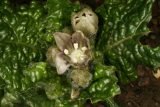
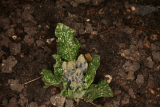
.JPG)
.JPG)
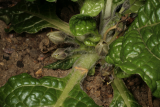
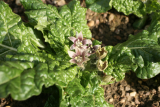

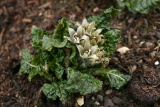
.JPG)



.JPG)
.JPG)
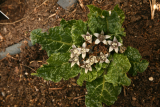

.JPG)
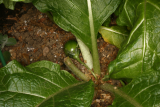

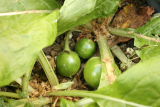
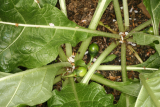
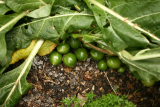
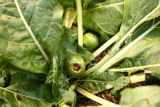
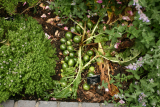
.JPG)

.JPG)

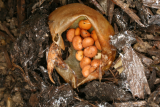
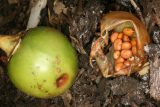
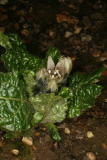
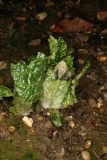
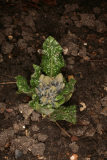
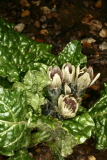
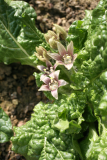
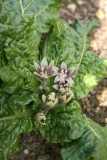

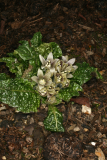
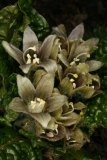
.jpg)

.JPG)